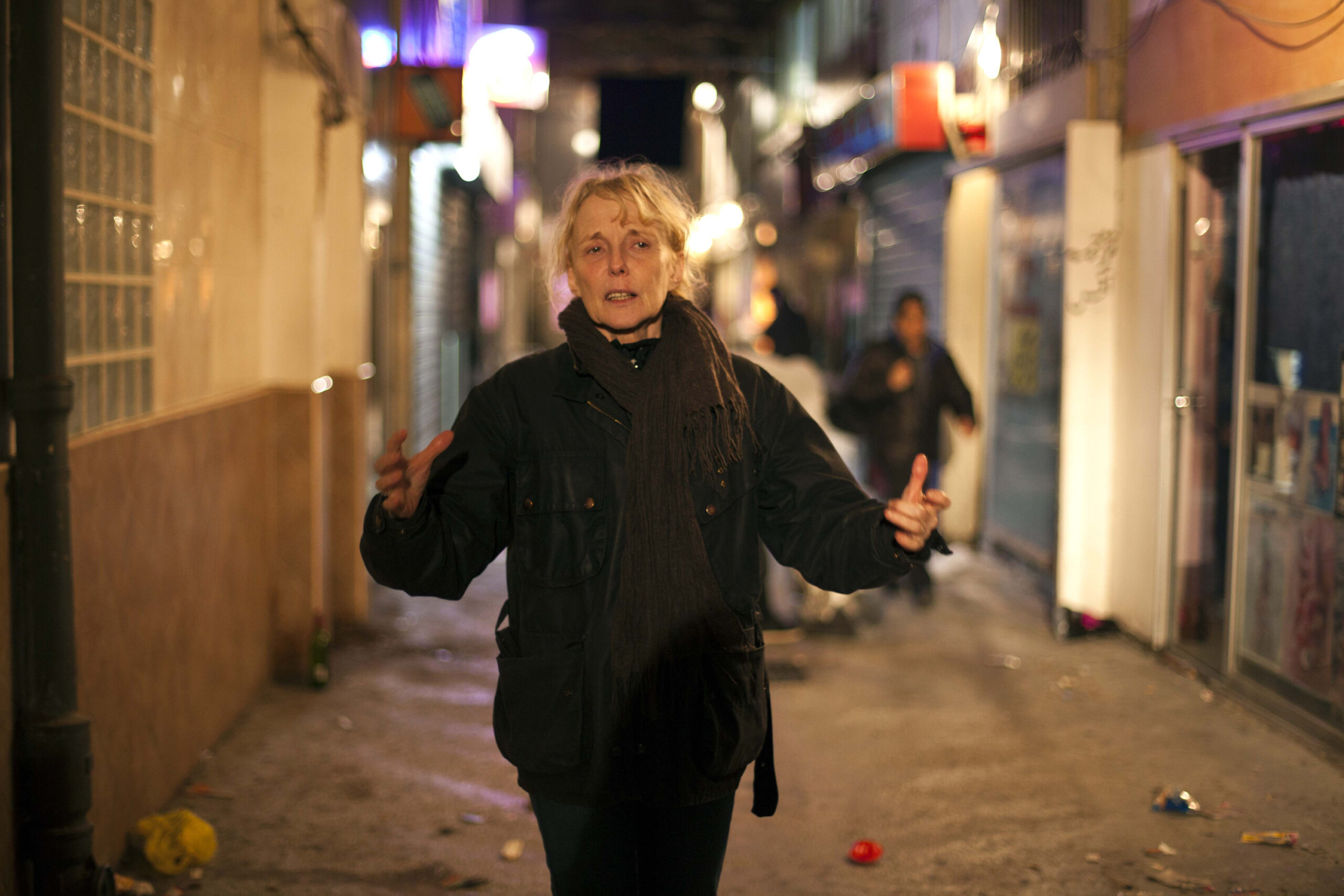
For Claire Denis, Both Sides of the Blade is both a reunion and a return to Earth. In her first film since the 2018 space thriller High Life, the French master director reteams with Christine Angot, a novelist with whom she collaborated on 2017’s Let the Sunshine In.
That film was based on a 1977 text by Roland Barthes. But for Both Sides of the Blade, Denis and Angot liberally reshaped one of Angot’s tomes. The resulting film is a ferocious romantic saga starring Juliette Binoche and Vincent Lindon as a couple haunted by the reappearance of her ex-lover, who is also his former best friend.
Denis and Angot first met in person when choreographer Mathilde Monnier connected them. But the filmmaker knew the author before they had exchanged a single word.
“I met her by reading her in a book,” the director told MovieMaker, speaking from Paris. “Liking someone is like liking a musician, it’s not a particular book, it’s her style, the way she wants to write what she wants to write about, the person she is. …It’s a complex thing to like someone.”
Denis prioritizes emotional precision above all, and that extends to the titles of her narratives.
Angot’s original novel is called Un Tournant de la Vie, or A Turning Point in Life, but the connotation of the words didn’t match what the director envisioned for the screen.
“The novel has a very different title because it’s in fact quite different,” Denis says. “In it the husband has a very serious disease. The title had to do with the fact that this man may or may not recover.”

At the Berlin International Film Festival earlier this year, where Denis won the eceived the Silver Bear for Best Director, the film was first introduced to the English-speaking world as Fire, a working title attributed to the piece during principal photography. But it never felt quite right to Denis. In French, the picture bears the name Avec Amour et Acharnement, which loosely translates to With Love and Fury. But the word “fury,” she believes, didn’t exactly capture the sentiment of the film.
Ultimately, the English-language title came from the song that musician Stuart Staples wrote for the film’s end credits, which he christened “Both Sides of the Blade.” Denis felt that it reflected the amorous intensity of the story.
Beyond the title, the film also features other elements not in the source material, including a luminous opening sequence in which Sara (Binoche) and Jean (Lindon) enjoy an afternoon at the sea.
Won’t You Take 10 Seconds to Sign Up for Our Newsletter?
“They are a man and a woman who have decided to live together,” says Denis. “I wanted that opening, not as a metaphor of happiness, but something physical about them liking being together.”
Then there’s the symbolic use of Sara’s cell phone as an artifact of memory. The director says the idea emerged after both she and Angot accidentally lost access to their phones. Denis damaged hers while boiling water for tea, and Angot forgot hers on a bus.
“We all know when we lose a phone that the past is in it — of course a phone is only a phone, but the moment it happens when someone says, ‘No, I can’t save your chip, there is nothing,’ it’s a bit of a strange moment,” she notes. “We contain our lives, but the cell phone creates this addiction to registered memory.”
Watching Both Sides of the Blade, one can infer that the apartment where the most incendiary quarrels occur was chosen for both practicality and dramatic potential. This is especially true of the balcony where Jean often spends time alone. It was present in Angot’s novel, but Denis enhanced its significance.
“In the book it was the refuge of the man. He would go to the balcony to smoke a cigarette, to breathe on his own,” Claire Denis says. “Then I found this apartment that we could rent and suddenly I realized the balcony was also placing him a little bit above the street, as if he was there, not only to be alone and smoke, but to have a little view upon his life.”
Shot as the COVID-19 pandemic raged, the film reflects how desolate the French capital looked, and how its residents experienced it.
“I was so lucky to be able to do this film with the actors in Paris,” Denis says. “My producer first told me, ‘No masks, please.’ But I said, ‘Look, Paris is empty. People who are working are allowed to go out in the subway in masks. Let’s keep it the way it is. I’m not going to have extras without masks in the streets. I won’t do that.’”
Since both leads knew their lines impeccably and cinematographer Eric Gautier, using a handheld camera, knew the exact trajectory of each scene, Denis avoided rehearsals.
“I knew I was going to be with them, walking with them, with the camera and be next to them, be inside the scene with them. I had no need to rehearse myself,” she explains.
Asked why she “enjoys” working with a handheld camera, Denis replies:
“’Enjoy’ is not a word that goes well with filmmaking. Filmmaking is a sort of a translation of emotions. When I say ‘enjoy’ is not the right word, it doesn’t mean that it’s terribly painful, but directing a movie is a process one goes through. It has nothing to do with suffering or enjoying it. It’s just what the process of directing is.”
Both Sides of the Blade is now in theaters, from IFC Films.
Main image: Vincent Lindon and Juliette Binoche in Both Sides of the Blade, directed by Claire Denis, courtesy of IFC Films.
